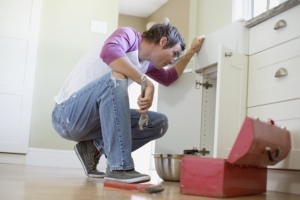The Shining is an odd title for The Shining. In both Stephen King’s novel and Stanley Kubrick’s film, “shining” is shorthand for the psychic abilities possessed by Danny Torrance, the son of writer turned work-averse lunatic Jack Torrance. King and Kubrick utilize shining differently—in the novel, it’s more symbolic of the metaphysical powers at work in the world—but in both mediums, the shining is just a piece of a larger puzzle. Perhaps The Shining would’ve been a better title for the book’s sequel (and now the movie’s sequel) Doctor Sleep, which is all about the shining.
Doctor Sleep (the movie) takes place 39 years after its cinematic predecessor, following Danny Torrance—ahem, Dan Torrance—as a middle-aged man still struggling with supernatural trauma. Though his inner demons are loud, he’s learned to amplify his shine in response: Dan can now defeat ghosts with his mind, use telepathy at will, and sense others who have the shining. That’s how he meets Abra, a teenager with the shining who enlists him in the fight against the True Knot, a sect of cannibalistic shiners that feeds off of young people with the shining. See? Now this story is shiny.
Writer/director Mike Flanagan, the man behind Netflix’s fantastic adaptation of The Haunting of Hill House, clearly shares King’s symbolic aspirations. In Doctor Sleep, “the shining” is microcosmic of a metaphysical war between good and evil, and those with psychic powers are more tuned into this war than most. Like in King’s novels, the psychic acknowledgment of evil within oneself manifests as alcoholism—know the pain, dull the pain, share the pain. Or, as Abra and other virtuous shiners remind Dan, find the yin to the pain’s yang: thus Dan’s crusade against the True Knot echoes the conflict within his soul.
Narratively and aesthetically, Flanagan is a filmmaker that finds humanism in horror—a sort of antithesis to the fatalism of modern horror directors like Aster and Eggers. In Flanagan’s work, the human spirit is the one thing that can drive away the darkness, and Doctor Sleep nimbly merges this philosophy with King’s supernatural morality plays. One could argue that the Overlook Hotel was the main character of Kubrick’s The Shining, but Flanagan shifts gears to prioritize people. Doctor Sleep is about Dan Torrance, about his place in the grander battle, about the human relationships that help him right himself. Flanagan and his longtime cinematographer Michael Fimognari build suspense by lessening the visual distance between people and their demons: we can see what hides in the shadows, we’re not afraid of them; we’re afraid that our protagonists will take a step too far and join them.
Doctor Sleep alludes to the role of modernity in this spiritual conflict. It’s said that as one grows up in contemporary society, their ability to shine weakens, and characters hazard some guesses as to why: Netflix, diets, or overmedication, perhaps. The movie suggests that it’s a result of what previous generations left behind—what world did Jack Torrance create for his son? What responsibility does Dan have to help Abra avoid a similar fate? The question of how shining reverberates across generations becomes a thematic through-line, but it’s somewhat dropped during the movie’s finale. The inevitable return to the Overlook Hotel isn’t the problem—in fact, Flanagan’s re-use of the setting speaks to the theme of legacy quite well—the problem is that Doctor Sleep takes its ending from different source material. The movie Doctor Sleep borrows a climax from the book The Shining, presumably in an attempt to honor the ending that Kubrick ignored, but preceding themes are snuffed out in the process. In serving two masters, Doctor Sleep leaves its most intriguing ideas inchoate.
Still, the horror movie at the surface is effective, and Flanagan’s trademark hopefulness survives intact. Doctor Sleep may not live up to all its lofty goals, but it meshes familiar stories into a breath of fresh air.
★★★½ (3.5/5)




